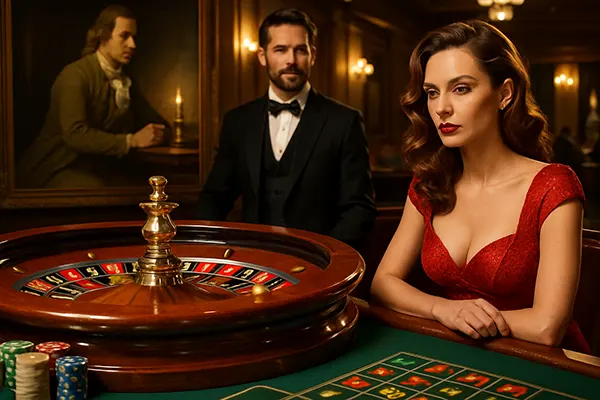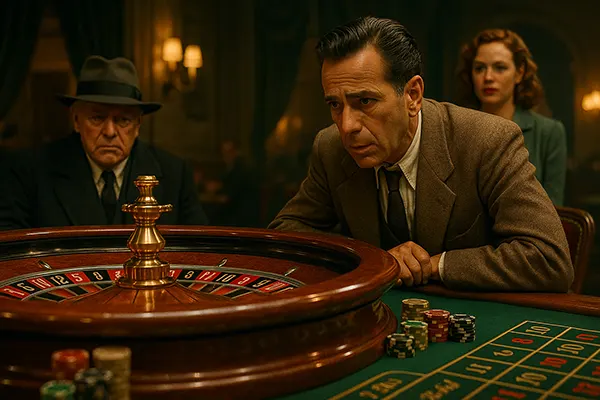
Mythology and History of Roulette in Culture: From France to Hollywood
Roulette, one of the most iconic casino games in history, is more than just a spinning wheel and numbered slots. Its origin story is deeply rooted in European intellectualism and mysticism, evolving into a staple of luxury, suspense, and cinematic flair. From the salons of Enlightenment-era France to the bright lights of Hollywood films, roulette carries a symbolic weight far beyond its physical form. This article explores its cultural trajectory through myths, history, and popular media portrayals.
The Origins of Roulette: Between Philosophy and Mathematics
The origins of roulette are often traced back to 17th-century France, where mathematician Blaise Pascal inadvertently laid its foundation while trying to invent a perpetual motion machine. The concept of a spinning wheel resonated with both philosophical ideas and probability theory, embedding roulette into the intellectual fabric of Europe.
By the 18th century, roulette gained popularity in French aristocratic circles. The early versions of the game bore clear signs of mathematical elegance, with the inclusion of a zero and a carefully balanced number sequence. These characteristics were not coincidental—they reflected a growing fascination with order, logic, and chance.
The symbolism of the wheel was also significant. In both classical and Christian traditions, the wheel often represented fate, divine justice, or the turning cycles of life. This metaphor aligned perfectly with the unpredictable outcomes of roulette, making the game more than just entertainment—it became a cultural symbol of destiny and fortune.
French Revolution and Legal Turmoil
Following the French Revolution, roulette faced periods of prohibition and underground activity. The game was seen by the new order as a symbol of aristocratic excess and was banned in many areas. Despite restrictions, it continued to evolve and spread.
In the 19th century, roulette found refuge in Germany, particularly in the casino of Bad Homburg, where the brothers François and Louis Blanc introduced the single-zero version to improve house advantage. Their innovation turned roulette into a commercial success that would eventually reach Monte Carlo and beyond.
This period marked roulette’s transition from philosophical pastime to regulated gambling activity. It became institutionalised in European gaming houses and increasingly adopted by travellers, diplomats, and intellectuals who frequented these establishments.
Roulette’s Journey to the United States
Roulette crossed the Atlantic in the 19th century, adapting to a new landscape of frontier saloons and underground gambling venues. However, the version that took root in America differed significantly from its European counterpart. The American version included a double zero, increasing the house edge and speeding up gameplay.
The layout and betting structure were also adapted to suit a more fast-paced gambling environment. These changes turned roulette into a game of chance that catered to a growing population of fortune seekers in the Western frontier and later in Las Vegas.
Over time, American roulette became emblematic of the country’s entrepreneurial spirit and risk-oriented culture. Despite the mathematical disadvantage for players, it flourished thanks to its simplicity and the thrill it offered in betting against the wheel.
Regulation and Commercialisation in Modern America
With the legalisation of gambling in Nevada in 1931, roulette entered a new era. The game was now fully institutionalised and subject to state regulation. Las Vegas casinos offered both European and American variants, although the latter dominated due to historical inertia and design preference.
Televised games, marketing campaigns, and the advent of online casinos helped popularise roulette further. By the late 20th century, roulette was no longer confined to physical tables—it had become a virtual and symbolic presence in American gambling culture.
Roulette also became a subject of academic study in behavioural economics, psychology, and game theory, cementing its place not only in casinos but also in the intellectual analysis of chance and human decision-making.

The Wheel on the Silver Screen: Roulette in Popular Culture
Roulette has been immortalised in film and television, often as a narrative device symbolising fate, risk, and emotional tension. From classic noir to modern thrillers, the game frequently appears during moments of heightened drama or moral dilemma.
One of the most iconic scenes featuring roulette appears in the 1942 film “Casablanca,” where the roulette wheel is used to decide the fate of desperate characters. This portrayal underscored roulette’s metaphorical role in stories of uncertainty, luck, and ethical ambiguity.
Beyond drama, roulette has also been used in comedies, thrillers, and even psychological narratives, serving as a visual shorthand for unpredictability and the human impulse to control what cannot be controlled.
Symbolism and Semiotics in Film
Directors and screenwriters often use the roulette wheel to symbolise pivotal choices and transformative moments. The spinning wheel becomes a metaphor for time, destiny, and the fine line between success and ruin.
In many films, characters who place bets on roulette are not just gambling with money—they are wagering on relationships, justice, identity, or self-worth. This rich symbolic layer elevates roulette from a game to a cultural icon.
Its enduring presence in visual storytelling reveals how deeply embedded roulette is in the collective imagination, not just as a game but as an existential metaphor. The wheel turns, and with it, the human narrative spins forward.
